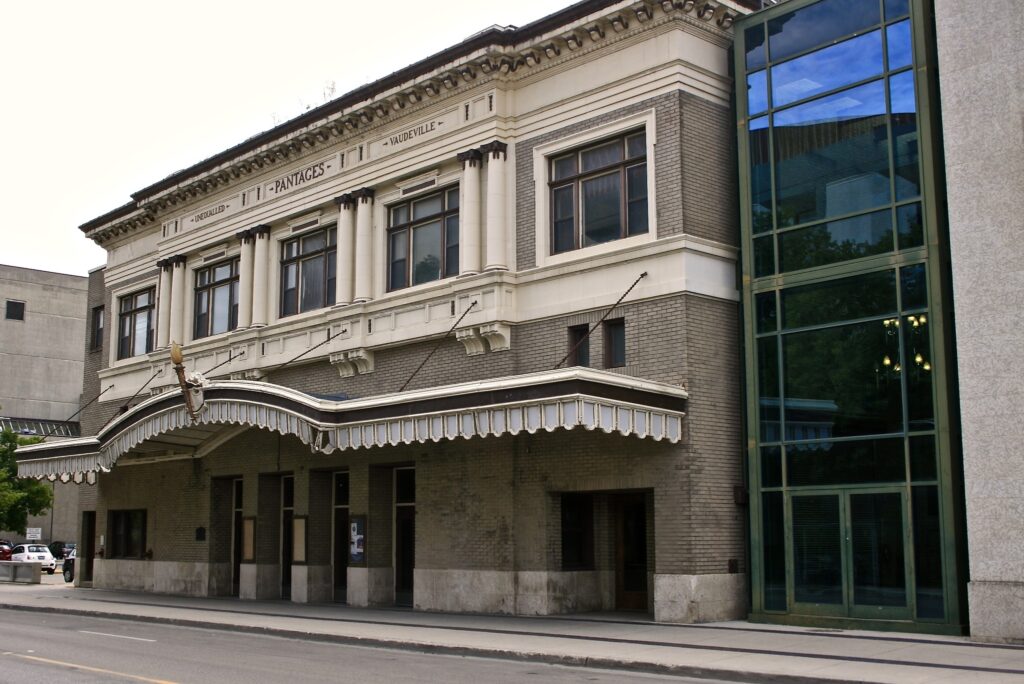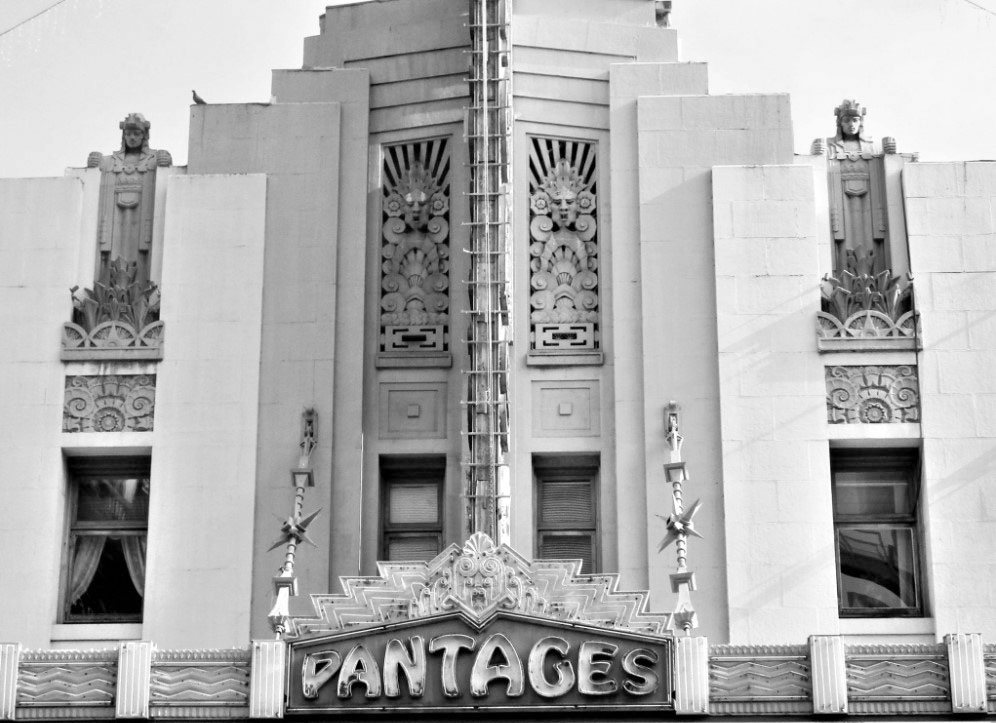My recent work on the Pantages Theatre got me thinking…who was this guy? Although his name lingers on in a variety of theatres, he is not very well known.

Alexander Pantages was a Greek American vaudeville impresario who created a large circuit of theatres across western Canada and the United States. At the height of his empire, he owned or operated 84 theatres. He was also involved in early motion picture development.
He seems to have a had chaotic youth – he was born in Greece, ran away to sea at age 9 while on a trip to Cairo with his father and ended up in Panama, working on the Panama Canal. He went to Seattle after contracting malaria, then settled in San Francisco trying his hand as a waiter and boxer. He then ended up in Dawson City, Yukon during the Gold Rush.
In Dawson City he worked as a porter at the Dawson City Opera House, eventually managing the theatre. The Opera House was destroyed by a fire in January 1900 but Pantages built a new house, this one with electric lighting and a brick chimney. The Orpheum Theatre opened in February 1900 and by June the theatre had acquired a movie projector, adding motion pictures to the entertainment. By April 1903 Pantages had left the Yukon and was proprietor of the Orpheum Theatre in Victoria, BC where he managed its vaudeville and moving picture shows.

Pantages then moved to New York for a year and eventually returned to Seattle, Washington where he opened the Crystal Theatre. The purchase of the property was tainted with scandal as his one-time girlfriend Kate Rockwell, a performer turned theatre owner, accused him of “breach-of-promise-to-marry” when Pantages married a violinist, Lois Mendenhall, in 1905. Kate also later accused him of stealing money from her to buy the Crystal Theatre.
Pantages opened a second theatre in Seattle, the Pantages, in 1904 and in 1906 another, the Lois. In 1914 he built the Pantages Theatre (now the Pantages Playhouse, a National Historic Site) in Winnipeg, Manitoba, the ninth theatre in a rapidly expanding business. By 1920, Alexander Pantages owned more than 30 vaudeville theatres in the United States and Canada. Through management contracts he further operated as many as 60 more theatres Together, these theatres formed the “Pantages Circuit”.

On the Pantages Circuit, Pantages could circulate vaudeville shows he had signed to long-term contracts. In 1920 he joined forces with Famous Players, allowing him to add motion pictures to his sites. Throughout the 1920s the Pantages Circuit dominated the market in the western United States and Canada. The most easterly location on the Pantages Circuit was the Pantages Theatre in Toronto, opened in 1920.
In 1929 Alexander Pantages was accused of the rape of a 17 year-old vaudeville dancer. He was convicted and sentenced to fifty years in prison. He was jailed for several months but on appeal received a new trial, where he was acquitted. The same year, his wife Lois was involved in a sensational murder trial and convicted of manslaughter while driving drunk; she was put on probation. The trials ruined Pantages financially and he sold off his theatre chain, for much less than it had cost him to build, and retired.
Alexander Pantages died, age 72, 1936 of a heart attack and is buried at Forest Lawn Memorial Park in Glendale, California. Lois died, age 57, in 1941 after suffering a heart attack while swimming off her yacht near Catalina Island, California. The couple had three children: Rodney Alexander, b. 1905; Lloyd Alexander, b. 1907; and Carmen Elrene, b. 1909.






